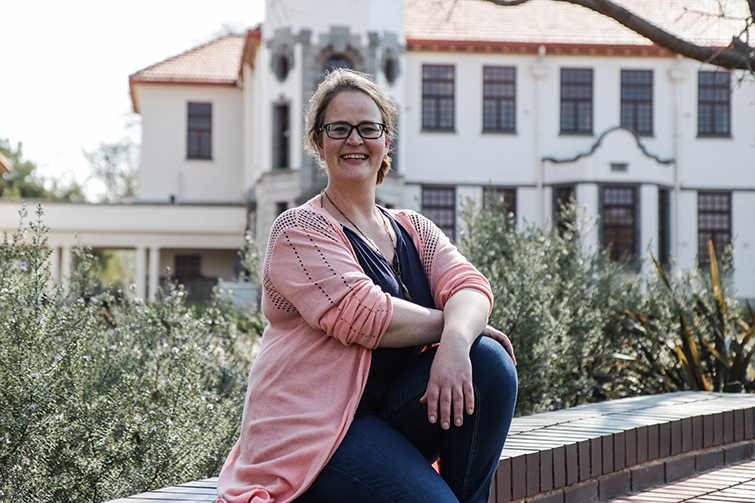23 September 2022
|
Story Jani de Lange
|
Photo Rulanzen Martin
 Jani de Lange is a Sign Language academic and researcher and a campaigner for South African Sign Language and greater inclusion for South Africa’s Deaf community. She is currently busy with her PhD at the UFS.
Jani de Lange is a Sign Language academic and researcher and a campaigner for South African Sign Language and greater inclusion for South Africa’s Deaf community. She is currently busy with her PhD at the UFS.
September is designated as the National Month of Deaf People in South Africa. This includes the International Week of Deaf People (19-25 September) and the United Nations-recognised International Day of Sign Languages (23 September). This month commemorates the first World Deaf Congress, held in Italy in September 1951, at which the World Federation of the Deaf (WFD) was established. The purpose of this month is to raise public awareness about Deaf people’s concerns and successes, about hearing loss, deafness, Deaf culture, as well as sign languages – in our case, South African Sign Language (SASL). The WFD, as the international Deaf organisation, allocates a theme every year to guide Deaf awareness campaigns. This year’s is ‘Building Inclusive Communities for All’. Considering the recent proposed amendment to include SASL as South Africa’s 12th official language, and our yearly celebrations of our diverse heritage on 24 September, this theme is applicable to all South Africans, not only the Deaf. But how much do we really know about this minority group?
To me, the success of this group is evident in their fight for the recognition of SASL, especially with regards to access to quality education. The Deaf community of South Africa has been fighting for the recognition of SASL for many years. The pre-1994 policy of racial segregation was extended to children’s hearing status, which resulted in small pockets of Deaf school communities away from their hearing peers. The education system at the time promoted the use of oralism (teaching Deaf children to lip-read and denying the use of SASL), and many Deaf children did not go to school. Despite this, SASL continued to develop among the different communities. This resulted in different dialects of SASL, a language with its own vocabulary and grammar rules. This language is an integral part of any Deaf person’s identity, and functions as a marker of cultural membership.
SASL needs more recognition as a Home Language
The Schools Act of 1996 recognises sign language (not specifically referring to SASL) as “official” for the purposes of teaching and learning in Deaf Schools. Unfortunately, this stipulation did not necessarily change the educational prospects for this group. While SASL was used as a medium of instruction, it was not accepted as an exit-level Home Language subject. According to an article published in the
‘African Disability Rights Yearbook’ in 2016, this led to many dropping out of school at Grade 7. Some learners were able to attend hearing schools by making use of residual hearing or assistive devices, but they either dropped out, or completed Grade 12 with poor results. Only a small group finished with an endorsed certificate. In all these scenarios, the prospects for tertiary education and employment are limited. A step towards improving educational opportunities for the Deaf was achieved in 2009: A family wanted their child to eventually attend a tertiary institution. Given the drawbacks of attending a hearing school, they did not want to risk their child’s chances, so they took the Department of Basic Education to court. After the case was settled out of court, SASL was implemented as an exit-level Home Language subject in Deaf schools in 2013.
This year, the draft Constitution Eighteenth Amendment Bill was published to give the Deaf community what they have been fighting for over so many years – official recognition of SASL. But will this recognition contribute to the inclusion of the South African Deaf community in the mainly hearing world? Currently, the legal protection of the Deaf in South Africa is under the umbrella of disability. This view is vested in the pathological perception of deafness, which is the prevailing understanding of the hearing world. To build an inclusive society, it is necessary to look beyond the medical aspect of ‘disabled’ and see the use of SASL as a marker of another culture, a view propagated by the socio-cultural approach to deafness. There is a lot that hearing people do not know or understand about the Deaf community and their experiences. However, we can acknowledge this group of people as part of our already diverse country by being open to learning more and celebrating their successes.
As individuals, we can take time to determine how we ourselves could change to promote inclusion, rather than expecting people to change to fit into our own view of society.